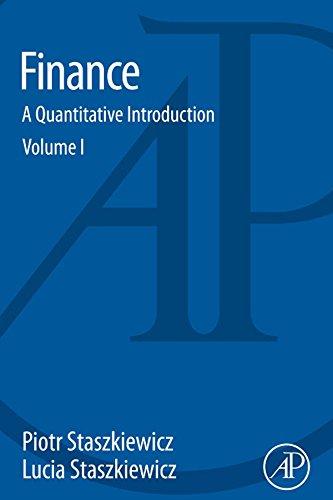(a) Scrabster Ltd's most recent financial information, published yesterday, contained the following data: Book value of equity $260 million and Book value of debt $200 million. The firm has a cost of equity of 10% and a pretax cost of debt of 5%. Earnings before interest, tax and depreciation (EBITD) are $140 million and this annual amount is expected to be constant for the next three years. Depreciation expense is constant at $20 million per year over the three years. Interest expense will also remain a constant figure over the three years. The corporate tax rate is 40 cents on the dollar A dividend of 25 cents per share is paid each year on 40 million shares outstanding. Scrabster Ltd's problem is that it has a patent that expires at the end of three years from now. When the patent expires, there are several scenarios concerning the firm's horizon value, which in turn affects the fair value of a Scrabster Share today. Required: Use the Discounted Abnormal Earnings valuation model to calculate the value of a Scrabster Ltd share today under these two scenarios (0) Expected abnormal earnings from after the end of the third year are zero (10 marks) Scrabster Ltd's abnormal earnings from the end of the third year are expected to reduce each ensuing year by 20 percent (such that each year's abnormal earnings figure will be 80 percent of the one before it.) (5 marks) (b) Both the discounted dividend model and P/E ratio and Market-to-book ratio (MVE/BVE) are used to work out a fair value of a fim's shares. D. (1+8) Po P/EPS MVE PER SHARE BVE PER SHARE Required: Please identify, with some simple arithmetic and a short written explanation, how the discounted dividend model is linked to important financial variables which are the key influences on the value of: (0) The P/E ratio. (ii) The Market-to-book ratio Arithmetic Connection DDM & P/E Ratio: Divide each side by EPS: DPS EPS, (1+g) P. EPS. reg Where: Dividend Payout Ratio = DPS. =d= EPS, P/E is a function of "d" discounted to a present value DDM & the Market-to-Book (Price-to-Book) Ratio Divide both sides of the simple DDM model by the book value of Equity (BVE PER SHARE) DPS, (1+g) P. BVE PER SHARE BVE, PER SHARE Where: DPS, DPS, EPS, DPS, 0 x ROE BVE PER SHARE EPS, BVE PER SHARE EPS, 62 Hence, P/BVE is a function of: ROE scaled by the dividend payout ratio - That is discounted to a present value P. BVE, PER SHARE (ROEXd)(1+g) re-g 63 Theoretical Arithmetic Connections Using the Discounted Dividend Model Connection between Valuation Ratios and the Discounted Dividend Model In a rational world, these connections would be arithmetically precise - But are investors rational? Let D, be called DPS,(1+g) DPS (1+g) Po = reg (a) Scrabster Ltd's most recent financial information, published yesterday, contained the following data: Book value of equity $260 million and Book value of debt $200 million. The firm has a cost of equity of 10% and a pretax cost of debt of 5%. Earnings before interest, tax and depreciation (EBITD) are $140 million and this annual amount is expected to be constant for the next three years. Depreciation expense is constant at $20 million per year over the three years. Interest expense will also remain a constant figure over the three years. The corporate tax rate is 40 cents on the dollar A dividend of 25 cents per share is paid each year on 40 million shares outstanding. Scrabster Ltd's problem is that it has a patent that expires at the end of three years from now. When the patent expires, there are several scenarios concerning the firm's horizon value, which in turn affects the fair value of a Scrabster Share today. Required: Use the Discounted Abnormal Earnings valuation model to calculate the value of a Scrabster Ltd share today under these two scenarios (0) Expected abnormal earnings from after the end of the third year are zero (10 marks) Scrabster Ltd's abnormal earnings from the end of the third year are expected to reduce each ensuing year by 20 percent (such that each year's abnormal earnings figure will be 80 percent of the one before it.) (5 marks) (b) Both the discounted dividend model and P/E ratio and Market-to-book ratio (MVE/BVE) are used to work out a fair value of a fim's shares. D. (1+8) Po P/EPS MVE PER SHARE BVE PER SHARE Required: Please identify, with some simple arithmetic and a short written explanation, how the discounted dividend model is linked to important financial variables which are the key influences on the value of: (0) The P/E ratio. (ii) The Market-to-book ratio Arithmetic Connection DDM & P/E Ratio: Divide each side by EPS: DPS EPS, (1+g) P. EPS. reg Where: Dividend Payout Ratio = DPS. =d= EPS, P/E is a function of "d" discounted to a present value DDM & the Market-to-Book (Price-to-Book) Ratio Divide both sides of the simple DDM model by the book value of Equity (BVE PER SHARE) DPS, (1+g) P. BVE PER SHARE BVE, PER SHARE Where: DPS, DPS, EPS, DPS, 0 x ROE BVE PER SHARE EPS, BVE PER SHARE EPS, 62 Hence, P/BVE is a function of: ROE scaled by the dividend payout ratio - That is discounted to a present value P. BVE, PER SHARE (ROEXd)(1+g) re-g 63 Theoretical Arithmetic Connections Using the Discounted Dividend Model Connection between Valuation Ratios and the Discounted Dividend Model In a rational world, these connections would be arithmetically precise - But are investors rational? Let D, be called DPS,(1+g) DPS (1+g) Po = reg











